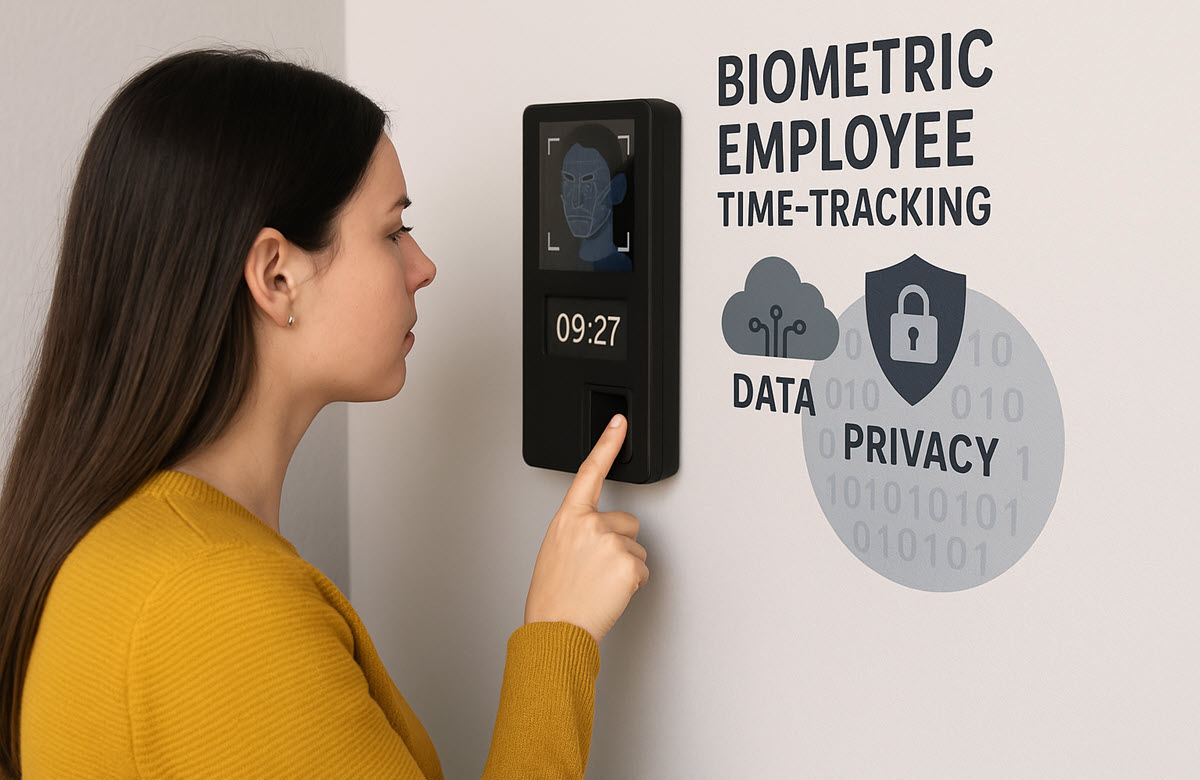Biometric Privacy Code 2025:
What NZ Time-Tracking Businesses Need to Know
Published by - Oct 01, 2025

The Office of the Privacy Commissioner has introduced the Biometric Processing Privacy Code 2025, a key update to New Zealand privacy law. It’s set to reshape how organisations manage biometric data, impacting time-tracking systems that rely on fingerprint scanners, facial recognition, and similar technologies.
What's Changing?
-
New systems (from 3 Nov 2025) must be compliant from day one.
-
Existing systems (by 3 Aug 2026) must be updated to meet the new Code.
Compliance involves:
-
Demonstrating that biometrics are strictly necessary for your purpose (necessity assessment).
-
Providing non-biometric alternatives: such as PINs, swipe cards, or mobile clock-ins, where biometrics aren’t essential.
-
Offering clear privacy notices and consent for staff.
-
Upgrading security, retention policies, and vendor agreements around biometric data.
Why This Matters
Most workplaces won't justify biometrics as the only way to track staff time. Alternatives like mobile tracking, PIN entry, or RFID cards work just as well without the privacy trade-offs. This Code means many biometric vendors will need to operate dual systems (biometric + non-biometric), increasing costs and complexity. Only high-security environments, such as restricted government facilities, are likely to justify biometric-only use.
TimeDock's Advantage
TimeDock uses no biometric data. That means:
-
No compliance overhead for us or our customers.
-
Privacy by design, making us an attractive, low-risk solution.
-
A simple, single-system alternative for businesses looking to escape complexity or dual-system setups.
Compliance Deadlines
| 3 Nov 2025 | New biometric time-tracking systems must comply |
| 3 Aug 2026 | Existing systems must be brought into compliance |
| Trial Period | Organisations may test biometric systems for up to six months (with one possible six-month extension), but these trials do not delay the compliance deadlines. |
What This Means for Businesses
This Code marks a major turning point. For NZ employers grappling with biometrics, the choices are clear: maintain costly dual systems or switch to a non-biometric solution like TimeDock. We offer an efficient, compliant, and worry-free path forward.
Next Steps
If your workplace uses fingerprint scanners, facial recognition, or other biometric clocks, now is the time to reassess. Planning your transition early means smoother operations later.
Curious about how these new rules affect your business? Dive into our full compliance guide for everything you need to know → Read the complete Biometric Privacy Code 2025 guide.
Get in touch to learn how TimeDock delivers compliant, privacy-first time tracking.
Next up: Valuing People Over Minutes
This article was published by on behalf of TimeDock Limited, New Zealand.